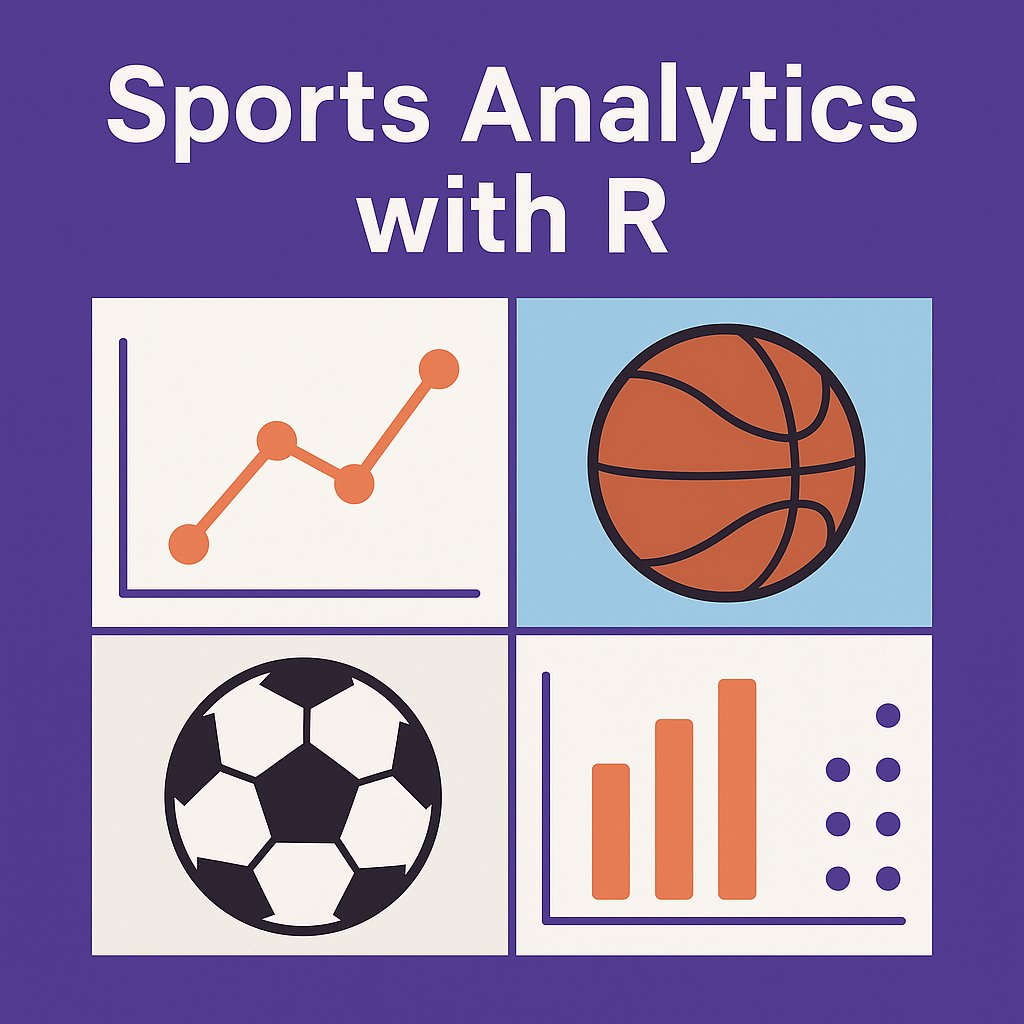How to Get Started in Sports Analytics with R
A beginner-friendly guide to R/RStudio and key packages (tidyverse, dplyr, ggplot2) for sports data.
Why R for Sports Analytics?
R is a powerful, open-source language widely used by analysts and researchers. Communities like R-Bloggers regularly publish sports-focused tutorials, and resources such as R Programming Books highlight how R turns raw data into actionable insights. With rich packages for wrangling and visualization, R is an excellent first choice for aspiring sports analysts.
Free & Open Source
No licensing fees; a vibrant, supportive community.
Package Ecosystem
tidyverse for data wrangling, dplyr for transforms, ggplot2 for charts.
Reproducible
Share code and notebooks to recreate analyses end-to-end.
Setting Up R and RStudio
- Install R from CRAN.
- Install RStudio Desktop from Posit (formerly RStudio).
- Open RStudio and create a new R Script (File → New File → R Script).
First Steps with tidyverse
Install and load the core packages:
# Install once
install.packages("tidyverse")
# Load on each session
library(tidyverse)Sample Sports Datasets
Let’s begin with a tiny, made-up game log (think basketball or football scores). We’ll compute team-level summaries and visualize points scored.
library(tidyverse)
games <- tibble(
game_id = 1:8,
date = as.Date(c("2025-01-08","2025-01-12","2025-01-19","2025-01-26",
"2025-02-02","2025-02-09","2025-02-16","2025-02-23")),
team = c("Lions","Lions","Wolves","Wolves","Lions","Wolves","Lions","Wolves"),
opponent= c("Wolves","Wolves","Lions","Lions","Wolves","Lions","Wolves","Lions"),
team_pts= c(88, 92, 81, 77, 101, 95, 84, 99),
opp_pts = c(85, 89, 79, 82, 96, 97, 90, 93)
)
glimpse(games)Load, Clean, and Explore
1) Loading CSV data
# If your data is a CSV file
# games <- read_csv("data/games.csv")2) Basic cleaning with dplyr
# Create a result column and a point differential
clean_games <- games %>%
mutate(
result = case_when(team_pts > opp_pts ~ "W",
team_pts < opp_pts ~ "L",
TRUE ~ "T"),
diff = team_pts - opp_pts
)
clean_games %>% count(team, result)3) Team summaries
team_summary <- clean_games %>%
group_by(team) %>%
summarise(
gp = n(),
wins = sum(result == "W"),
losses = sum(result == "L"),
avg_pts = mean(team_pts),
avg_allowed = mean(opp_pts),
avg_diff = mean(diff)
) %>% arrange(desc(avg_diff))
team_summaryQuick Visualizations with ggplot2
Average Points by Team
team_summary %>%
ggplot(aes(x = reorder(team, avg_pts), y = avg_pts)) +
geom_col() +
coord_flip() +
labs(title = "Average Points by Team",
x = "Team", y = "Avg Points")Point Differential Over Time
clean_games %>%
ggplot(aes(x = date, y = diff, color = team)) +
geom_line() +
geom_point() +
labs(title = "Point Differential Over Time",
x = "Date", y = "Point Differential")Beginner FAQ
How can I do sports analytics?
Start small. Learn the basics of R syntax, then practice with tiny datasets like the one above. Gradually incorporate real data (e.g., CSVs from official league sites) and repeat the same workflow: load → clean → summarize → visualize.
Why use R instead of spreadsheets?
R makes analyses reproducible, scalable, and automatable. You can version-control your code, share it, and re-run it with new data.
Do I need math or coding experience?
Basic familiarity helps, but many concepts are learned by doing. Focus on data wrangling and visualization first.
Next Steps & Resources
- Practice with tidy data principles in
tidyrand transformations indplyr. - Build charts with
ggplot2; try lines, bars, and scatterplots first. - Explore communities like R-Bloggers for sports tutorials.
- Read foundational texts from R Programming Books to deepen understanding.
Mini Glossary
| Term | Meaning |
|---|---|
tidyverse | Collection of R packages for data science. |
dplyr | Grammar of data manipulation (select, filter, mutate, summarise). |
ggplot2 | Grammar of graphics for elegant visualizations. |
tibble | Modern, user-friendly data frame. |
R is a powerful tool for sports analysis—stick with small, repeatable steps and your skills will compound quickly. 🏈🏀⚽

